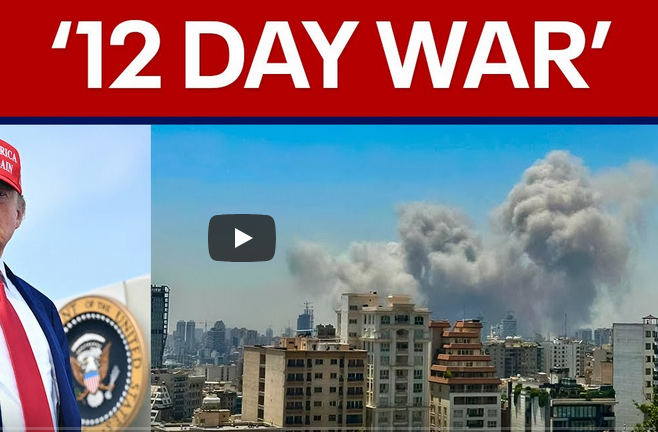The Middle East has witnessed a seismic shift in power dynamics. The so-called “12 Day War” between Iran and Israel has ended not with a whimper, but with the near-total annihilation of Iran’s military and strategic capabilities. What began as Tehran’s desperate gamble to assert dominance in the Middle East has culminated in an unprecedented humiliation that may well spell the end of the Islamic Republic as we know it.
Iran’s leadership had long promised devastating revenge against Israel, boasting of its missile arsenals, proxy networks, and nuclear ambitions. But in just under two weeks, Israel with decisive support from the United States unleashed a campaign of such precision and ferocity that Iran’s war machine was reduced to smoldering ruins. The turning point came with the midnight strike by U.S. B-2 stealth bombers, which penetrated deep into Iranian airspace undetected and delivered bunker-busting payloads onto Iran’s most fortified nuclear sites. Natanz, Fordow, and Isfahan, the crown jewels of Iran’s nuclear program were obliterated in a single night.
The Iranian response was pitiful. Its much-feared missile barrages, launched in a desperate attempt to salvage pride, were largely intercepted by Israel’s multi-layered air defenses. Those that got through struck civilian areas showing a tactic of terror rather than military strategy, while Israeli military installations remained largely unscathed. Even Iran’s threat to close the Strait of Hormuz evaporated as mere empty rhetoric the moment American and Israeli forces demonstrated their ability to dismantle Iran’s naval and coastal defenses with impunity.
This was not merely a military defeat; it was a decapitation. Israel’s intelligence apparatus, honed through years of shadow warfare, pinpointed and eliminated key figures within Iran’s Revolutionary Guard Corps (IRGC) and the inner circle of Supreme Leader Ayatollah Khamenei. The IRGC’s Quds Force, the spearhead of Iran’s regional aggression, saw its leadership vaporized in targeted strikes. The regime’s most fanatical enforcers who had spent decades exporting terror are now dead, their infrastructure in ruins.
Perhaps the most symbolic blow came when Israeli airstrikes shattered the gates of Iran’s notorious Evin Prison, aimed at freeing dissidents and political prisoners in a moment of poetic justice. The images of liberated Iranians struggling to flee the wreckage sent shockwaves through the country, exposing the regime’s fragility.
For years, Tehran’s propaganda machine peddled the myth of an invincible “Axis of Resistance,” portraying itself as the vanguard against Western and Israeli hegemony. That narrative lies in tatters. Hezbollah, Hamas, the Houthis and other Iran’s proxy armies were paralyzed, unwilling or unable to intervene as their patron was pummeled. The message was clear: Iran could not protect itself, let alone its allies.
The regime’s economic collapse, long in the making, has now accelerated into freefall. Sanctions had already crippled Iran’s economy, but the destruction of its military-industrial complex and nuclear program has left it with nothing to bargain for relief. Hyperinflation, fuel shortages, and mass unemployment are igniting unrest in cities across the country. The Iranian people, long suppressed, are rising, not just against economic hardship, but against the very ideology that has condemned them to isolation and stagnation.
The 12 Days War has exposed the fatal weakness at the heart of the Islamic Republic: it is a regime built on bluff and brutality, not sustainable power. Khamenei’s once-unassailable authority is crumbling. The IRGC, the regime’s Praetorian Guard, is decimated. The people, smelling blood in the water, are demanding change.
Regime change is no longer a Western fantasy, it is an inevitability if Iranians choose to seize it. Theocracy has set Iran back decades, suffocating its potential under religious dogma and militarism. The younger generation, connected to the world despite the regime’s efforts, knows there is an alternative.
A New Middle Eastern Order
The geopolitical implications are profound. With Iran’s influence in tatters, the balance of power in the region tilts decisively toward the U.S.-Israel-Saudi axis. Hezbollah, deprived of funding and arms, will wither. The Houthis in Yemen face a grim reckoning.
This war was not just about Israel’s survival. It was about ending Iran’s malevolent hegemony once and for all. And in 12 days, the annihilation clock against Israel was bombed into oblivion.
Now, the question is not whether the Islamic Republic will fall, but when and whether Iran’s people will have the courage to bury it for good.


